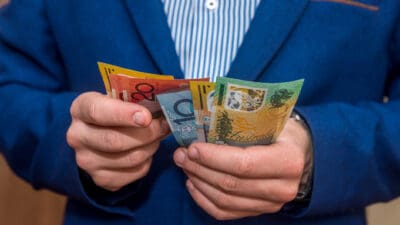I believe that every Australian investor can make $1,000 a month in dividends. To do that you need to invest in ASX dividend shares.
In this era of very low interest rates it's more important than ever for your money to be working hard for you. High interest savings accounts aren't really paying 'high' interest any more.
ASX dividend shares give Aussie income investors an advantage. Franking credits can really boost the yield (or reduce the tax liability) for Aussies.
If you receive a fully franked $7 dividend then you'll receive $3 of franking credits attached. A normal Aussie tax payer whose only income is the fully franked $7 dividend would get a $3 tax refund when they do their tax return. It depends on your tax situation and taxable income on how much of your franking credits are refunded, or just reduce the tax liability.
How big does your portfolio need to be to make $1,000 a month in dividends?
Our work income is the most important source of earnings until we retire. It's much easier to generate work income than build up enough money to make thousands of dollars in dividends.
But compound interest and diligent saving can build up an impressive nest egg. Receiving $1,000 a month in passive income is obviously $12,000 a year. How big of a nest egg you need will depend on what you invest in and the yields those shares have. If your portfolio has a 10% dividend yield then you'd 'only' need $120,000.
There are some shares that offer that kind of yield, but not many. And they probably won't show much capital growth because the profit is largely being paid out as dividends. I'm thinking of shares like WAM Research Limited (ASX: WAX) and Naos Emerging Opportunities Company Ltd (ASX: NCC).
What about a lower yield?
If your portfolio has a 6% dividend yield you'd need $200,000. A 6% yield is still high and today's ultra-low interest rates mean there aren't many good shares left with yields above 6%. But the coronavirus sell-off has helped those yields a bit. For that type of yield I'd go for WAM Microcap Limited (ASX: WMI), Future Generation Investment Company Ltd (ASX: FGX), Brickworks Limited (ASX: BKW), Rural Funds Group (ASX: RFF) and Duxton Water Ltd (ASX: D2O). Exchange-traded funds (ETFs) like BetaShares Australia 200 ETF (ASX: A200) and Betashares FTSE 100 ETF (ASX: F100) could offer sustainable higher yields in the future at the current prices once the coronavirus pandemic is over.
If your portfolio has a 4% dividend yield you'd need a portfolio worth $300,000. This is the type of yield where you can invest for both yield and growth. I'm thinking of shares like Magellan Global Trust (ASX: MGG) and Washington H. Soul Pattinson and Co. Ltd (ASX: SOL) that might be good.
The above numbers exclude the implications of income tax – every reader will have a different tax situation, but unless you need income this year it might be better to go for longer-term growth shares with lower yields.
How to reach your target portfolio size
The share market has historically produced returns of 10% per annum over the long-term. So that may be a decent number to use in any calculations. Right now it's a decent time to invest with share prices lower than earlier in the year.
If you invest $1,000 a month it would take just over seven years to reach a portfolio of $120,000 growing at 10% per annum. To reach $300,000 it would take less than 14 years.
Market-tracking investments like index exchange-traded funds (ETFs) will help you achieve what the market does. Some of the ideas in this space are iShares S&P 500 ETF (ASX: IVV) and Vanguard MSCI Index International Shares ETF (ASX: VGS).
You could try to grow your portfolio faster than the market by going for the best growth shares. I'm thinking about shares like Pushpay Holdings Ltd (ASX: PPH), Bubs Australia Ltd (ASX: BUB) and MFF Capital Investments Ltd (ASX: MFF).








